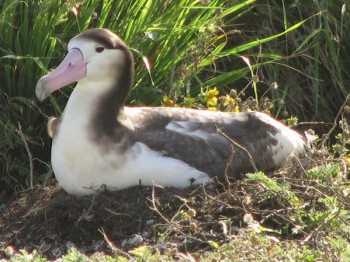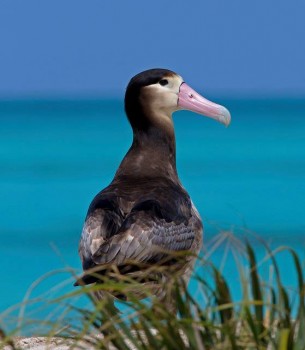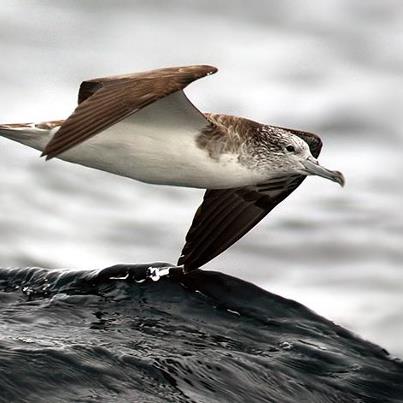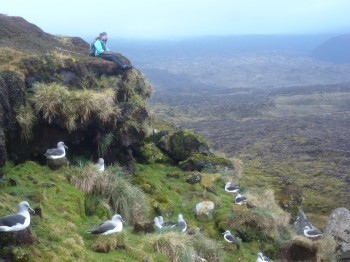Mollymawk albatrosses Thalassarche spp. occasionally turn up as vagrants on islands in the Southern Ocean, usually in breeding colonies of congeners, as reported from time to time in ACAP Latest News (click here). Some of the birds occupy nests and there a few examples of pairing with the species breeding in the visited colony.
Mollymawk species recorded in this way include Black-browed T. melanophris (Marion Island), Indian Yellow-nosed T. carteri (Marion), Salvin’s T. salvini, (Diego Ramirez, Gough and Kerguelen) and White-capped T. steadi (Bird (South Georgia (Islas Georgias del Sur)*), Prince Edward). The Grey-headed Albatross T. chrysostoma has also been reported in the literature as a vagrant in the Falkland Islands (Islas Malvinas)*, with a banded individual on West Point Island seen every year from 1952 to 1956, and another record in 1969.
Eight more recent records of vagrant Grey-headed Albatrosses from the Falkland Islands (Islas Malvinas)* are reported here by island locality.
Beauchêne Island: November 2001 occupying a nest on the edge of a large Black-browed Albatross colony (A. Black), c. 2005 and October 2010 (G. Munro) and 18 December 2010 (A.C. Wolfaardt); 2010 records at two different localities among breeding Black-browed Albatrosses.

Beauchêne Island, 18 December 2010, photograph by Anton Wolfaardt
Bird Island: October 2005 (S. Crofts).

Bird Island, October 2005, photograph by Sarah Crofts
New Island: 1990s, among Black-brow nests (T. Chater) and 16 December 2010, flying over a Black-brow colony (J.P. Granadeiro).

New Island, 16 December 2010, photograph by José Pedro Granadeiros
Steeple Jason Island: 2010 or 2011, on edge of Black-brow colony (S. Crofts) and 20 January 2015 on empty Black-brow nest (V. Collier & M. Reeves).
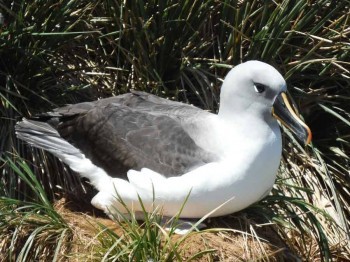

Steeple Jason Island, 20 January 2015, photographs by Vicky Collier
With thanks to Andy Black, Paulo Catry, Tom Chater, Vicky Collier, Sarah Crofts, José Pedro Granadeiro, Grant Munro, Mickey Reeves and Anton Wolfaardt for information and photographs.
Selected Literature:
Woods, R.W. 1988. Guide to Birds of the Falkland Islands. Oswestry: Anthony Nelson. 256 pp.
Woods, R.W. & Woods, A. 1997. Atlas of Breeding Birds of the Falkland Islands. Oswestry: Anthony Nelson. 190 pp.
John Cooper, ACAP Information Officer, 17 February 2015, updated 14 May 2015
*A dispute exists between the Governments of Argentina and the United Kingdom of Great Britain and Northern Ireland concerning sovereignty over the Falkland Islands (Islas Malvinas), South Georgia and the South Sandwich Islands (Islas Georgias del Sur y Islas Sandwich del Sur) and the surrounding maritime areas.

 English
English  Français
Français  Español
Español 